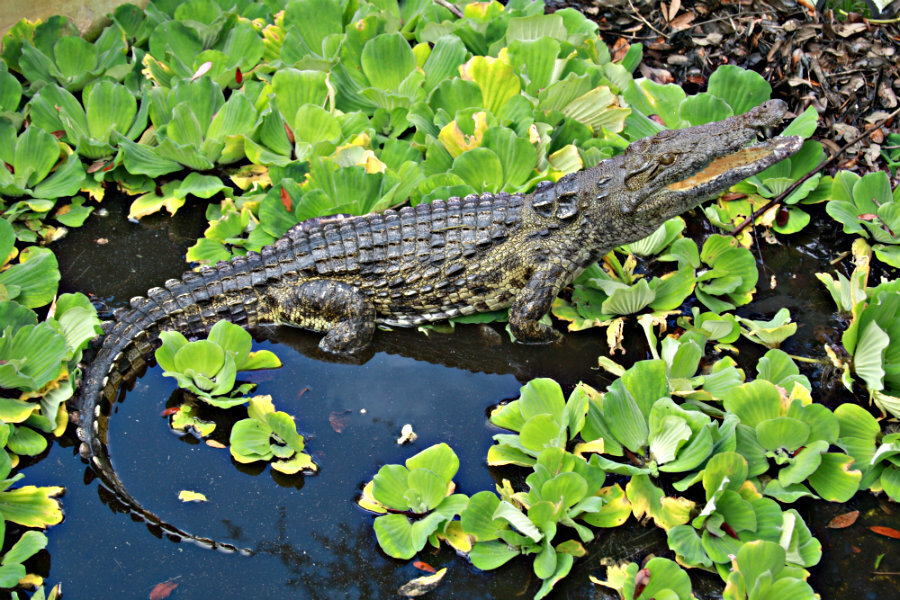What discovery of Nile crocodiles could mean for Florida
Loading...
Crocodiles aren’t an unusual sight in Florida, where they and their alligator cousins inhabit the state’s swampland. But in 2009, officials in South Miami-Dade county thought they had found something different.
This week, researchers in Florida announced that three crocodiles found in South Miami-Dade county since 2009 were likely Nile crocodiles rather than the more familiar American crocodile.
DNA testing allowed Florida biologists to confirm that these crocodiles were the “man eating” African version of the species, according to a study published last month.
“My hope as a biologist is that the introduction of Nile crocodiles in Florida opens everyone’s eyes to the problem of invasive species that we have here in our state,” said Kenneth Krysko of the Florida Museum of Natural History in a statement. “Now here’s another one, but this time it isn’t just a tiny house gecko from Africa.”
These crocodiles are different than Florida’s usual residents. They have been called “man eating” for their aggressive behavior: between 2010 and 2014, the Nile crocodile was responsible for 480 attacks on humans in Africa. Some 123 of those attacks were fatal, according to the Florida Museum of Natural History.
Nile crocodiles can grow up to 18-feet long when given the opportunity. One of the three crocodiles in Florida grew 28 percent between its first capture in 2012 and its second in 2014.
But where did the crocodiles come from? According to Dr. Krysko, it wasn’t from Africa.
Some invasive species problems begin when specimens are released into the wild, but Florida officials do not believe that this was the case for the crocodiles. Instead, officials say the swamp dwellers escaped from a facility called Predator World.
Florida is well known for its invasive species problem. The Washington Post reports that 99 percent of south Florida’s raccoon population and 98 percent of its opossum population has been eradicated due to the influx of invasive species the state experiences due to its temperate climate.
The state spends large amounts of money each year countering invasive plants and animals that harm the ecosystem. Weed choked waterways and damaged agricultural output cost the state up to half a billion dollars every year.
Now that biologists have confirmed that the crocodiles found in Florida’s swamps are Nile crocodiles, one big question remains: Are there more?
Some biologists say that there could be more due to the crocodile’s obvious resilience.
“The odds that the few of us who study Florida reptiles have found all of the Nile crocs out there is probably unlikely,” said Krysko. “We know that they can survive in the Florida wilderness for numerous years, we know that they grow quickly here and we know their behavior in their native range, and there is no reason to suggest that would change here in Florida.”
The Florida Wildlife Conservation Commission does not share Krysko’s view, however. Robert Klepper, a spokesperson for the Commission, told the Washington Post that routine inspections had not turned up more crocodiles since the last capture in 2014.
Mr. Klepper also said that due to dissimilar behavior, it is unlikely that the Nile crocodiles found in the last decade bred with native crocodile species.
“We’re confident this won’t be a problem,” he said.






